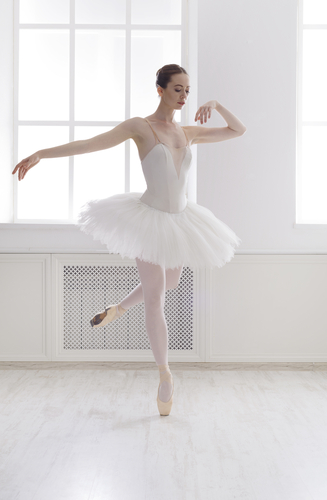Ballet and Dance Physiotherapy
Dance physiotherapy applies the current evidence-based sports medicine theory and
practice to this specific population with a thorough understanding of what is required of a
dancer from junior student to pre-professional and professional levels.
Pre-pointe assessments
Pointe work traditionally commences at the age of 12 for female dancers. At this time, these girls are often undergoing growth spurts and their dance loading can double or triple making this a very risky time for dancers in terms of injury.
Pointe work requires a good foundation of classical ballet technique as well as specific foot, ankle, knee and hip strength and control to be undertaken safely and enjoyably.
If the dancer is strong and technically proficient in these areas when commencing pointe work, injury can be prevented and the development of poor habits can be avoided.
A pre-pointe assessment includes a thorough examination of the range of motion, strength and technical proficiency of the dancer. Current and past injuries, overall dance load, dance styles and age are considered. A tailored exercise program will be provided to address the individual dancer’s specific requirements.
A Pre-pointe report will be provided and copies available to your dance schools.
Assessment Cost: $1
Assessment
Identify what is going on for you and what the source of the problem is
Treatment
Provide you with treatment to get you moving in the right direction immediately
Plan/Prevention
Create a tailored solution to help treat and prevent dance injuries.
Safe return to dance
Let our team guide you from injury to a safe return to dance ensuring no issues or re injury.
Dance specific injuries
Ballet places particular demands and loads on a dancer’s body. A unique collection of injury types is therefore seen in dancers that are less common in the general population.
Common dance specific injuries include:
- Posterior ankle impingement
- Os Trigonum syndrome
- Flexor hallucis longus tenosynovistis
- Metatarsal stress reactions and fractures
- Patellofemoral pain syndome
- Anterior hip impingement
- Labral pathologies
- Hip flexor tendon pathology

Importance of prevention
A dancer’s body is paramount to their future health and success in the dance industry. With correct preventative measures and a sound technical foundation, injuries can be prevented and career length maximised. Certain strengthening exercises should be incorporated into a dancer’s daily conditioning routine, especially if the dancer is on pointe, to maintain adequate strength and stability.
About our Dance Physiotherapists

Tonya completed her undergraduate degree at Monash University and her Master’s degree in Musculoskeletal Physiotherapy at La Trobe University in 2022. Throughout her physiotherapy career, she has worked in both private practice and the public hospital setting, treating patients across the continuum of care from acute injuries to post-operative rehabilitation. Her particular interest is in low back pain.
Prior to studying physiotherapy, Tonya completed an honours degree in Contemporary Dance at London Contemporary Dance School, performing thereafter as a professional ballet dancer. She also ran her own Pilates studio in the UK for 6 years and has been a Pilates teacher to physiotherapists with the APPI. As a result, she has had a lasting affinity for dance and performing arts and was fortunate enough to gain work experience with The Australian Ballet during her studies.
Tonya’s main interest outside of physiotherapy is running. She has completed numerous half and a full marathons.
Clinical Interests
- Neck pain
- Thoracic and Low back pain
- Hip and knee pain
- Shoulder conditions.

Clinical Interests
- Dance physiotherapy
- Pre-pointe assessments
- Ante/post-natal musculoskeletal concerns and exercise
- Hip pain
- Clinical Pilates and exercise
- Pre/post operative rehab. (hip and knee)
To read more about Miranda click here
